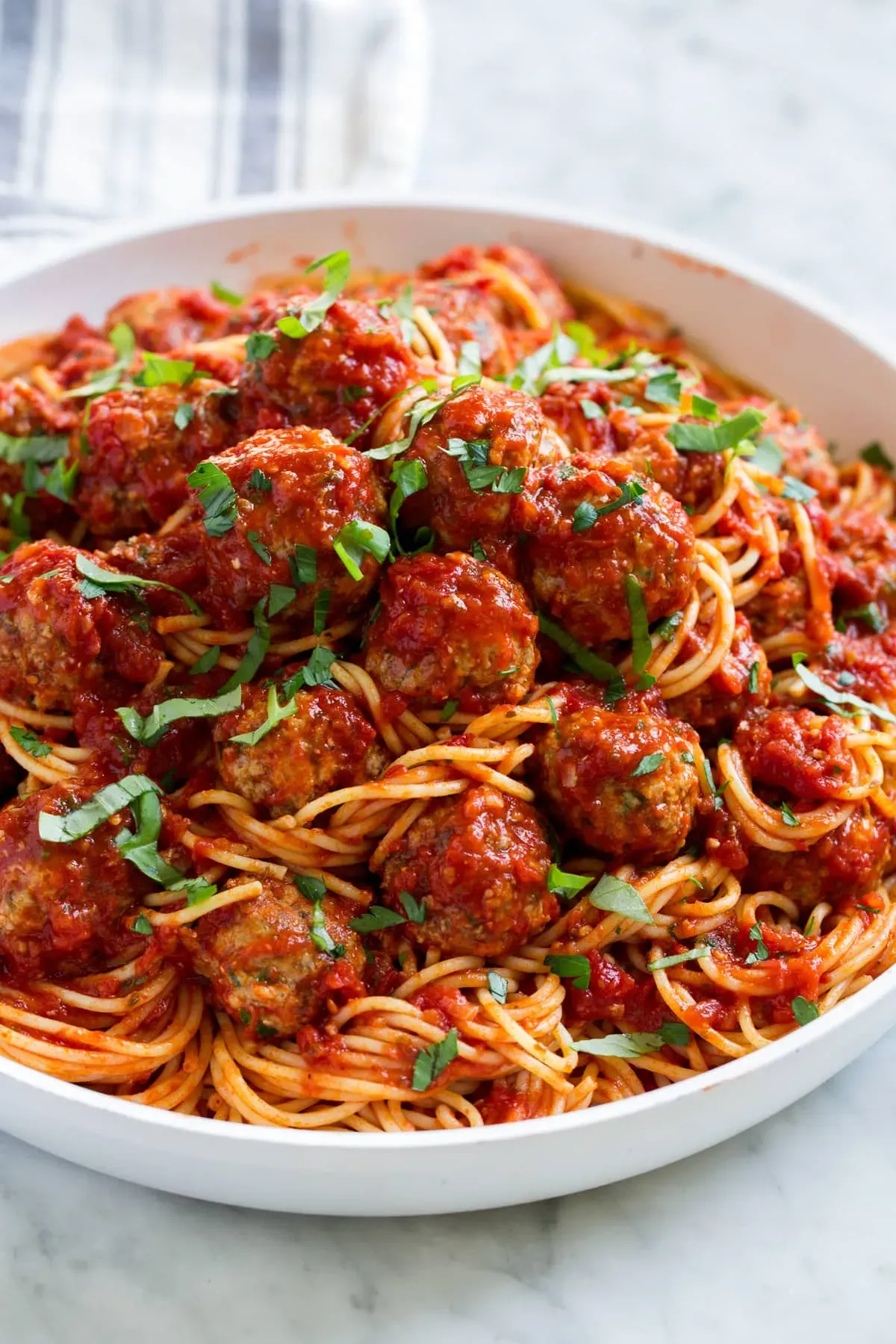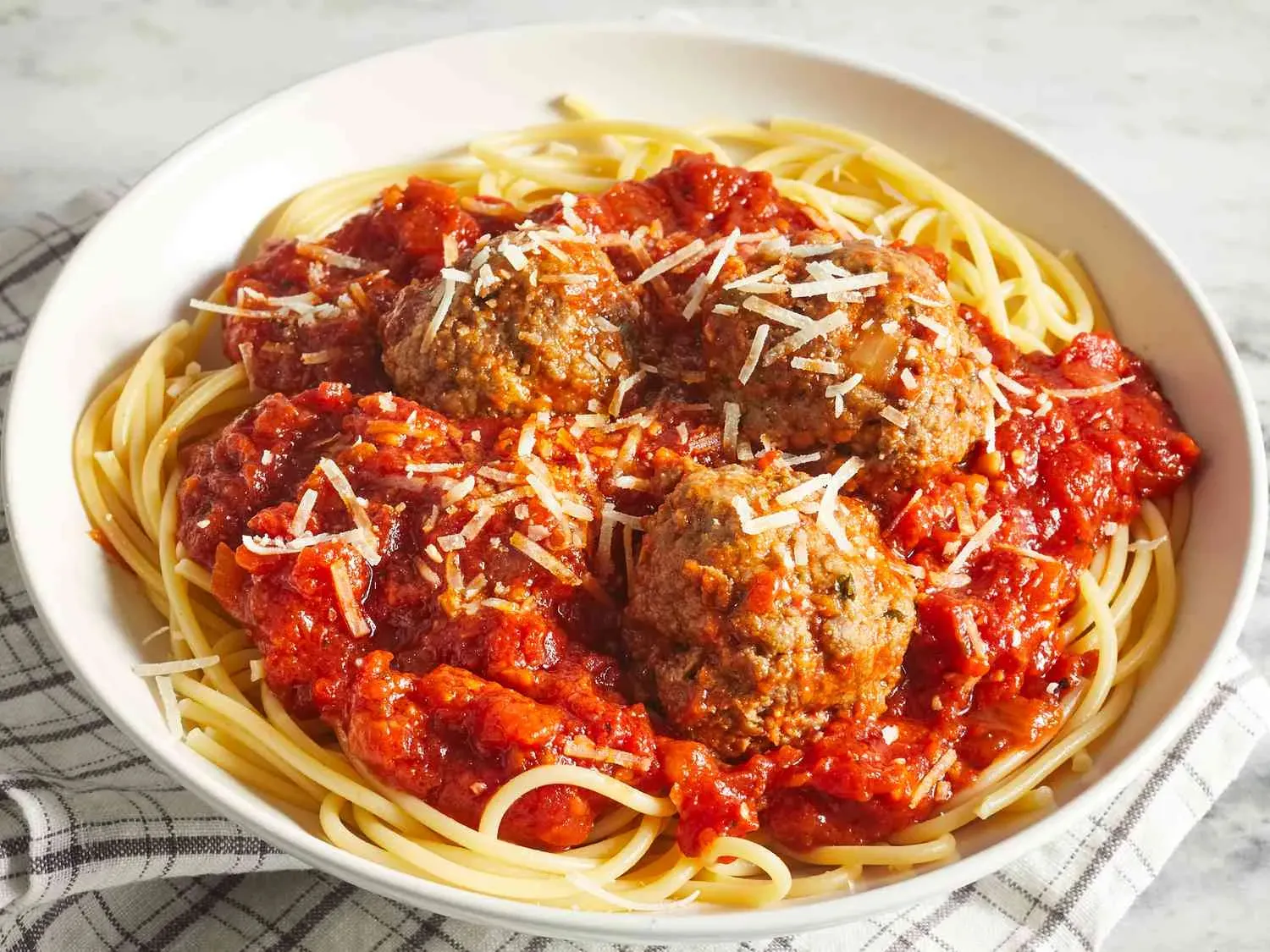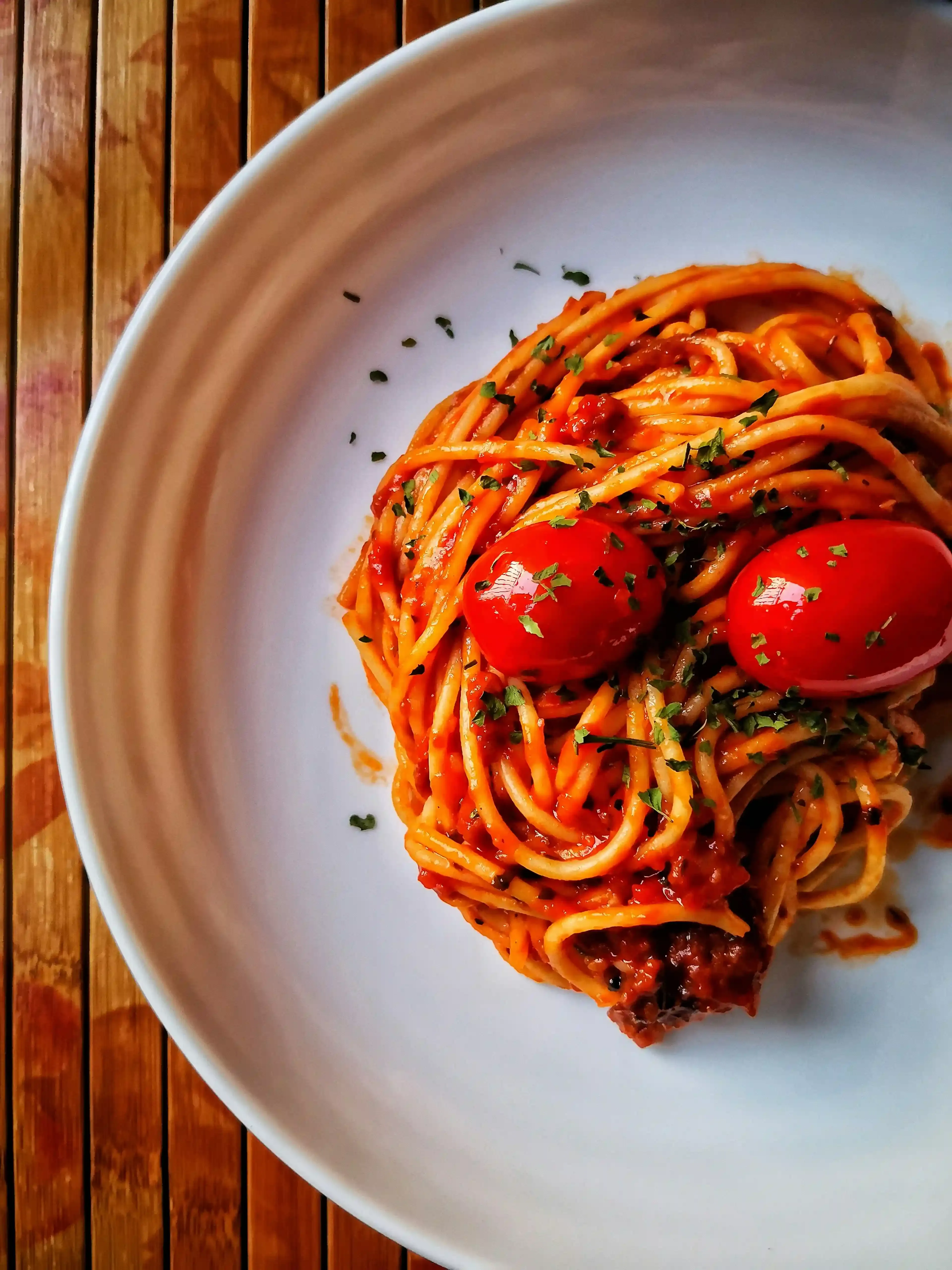Table of Contents
Everyone claims their grandmother made the *best* spaghetti and meatballs. Let's be honest, most of us have had our share of dry, sad meatballs swimming in watery sauce. The search for the truly perfect plate, the one that makes you close your eyes and hum, often feels endless. You're probably here because you're tired of recipes that promise the world and deliver... well, just okay. You're looking for the **best italian spaghetti and meatball recipe**, a reliable guide to that classic comfort food done right.
Why Your "Best Italian Spaghetti and Meatball Recipe" Hunt Ends Here

Why Your "Best Italian Spaghetti and Meatball Recipe" Hunt Ends Here
Tired of Dry Meatballs and Bland Sauce? You're Not Alone.
Let's be honest, the quest for the **best italian spaghetti and meatball recipe** can feel like chasing a culinary unicorn. You try a recipe online, it promises "authentic Italian flavor," and you end up with dense, rubbery spheres drowning in a thin, acidic tomato soup. Or maybe the meatballs are okay, but the sauce tastes suspiciously like it came straight from a jar, despite your best efforts. It's frustrating, right? You just want that comforting, soul-satisfying plate of pasta like the one you remember from your grandma's kitchen, or maybe the one you imagine exists in some nonna's house in rural Italy.
Decoding the "Authentic" Myth and Finding What Really Works
Here's the thing: "Authentic" Italian varies wildly depending on the region, sometimes even the family. There isn't one single, sacred **best italian spaghetti and meatball recipe**. What we're after is *delicious*, *tender*, and *flavorful*. This isn't about following some rigid dogma; it's about understanding the simple techniques that elevate humble ingredients into something truly special. We've sifted through the noise, tested the common pitfalls, and figured out what actually delivers that classic, comforting result. Consider this your final stop on the frustrating journey through mediocre meatball land.
So, what usually goes wrong?
- Using only one type of meat, leading to toughness.
- Overworking the meat mixture, resulting in dense meatballs.
- Skipping key flavor boosters like fresh herbs and garlic.
- Not cooking the meatballs properly, leaving them dry or undercooked.
- Using a weak or unbalanced tomato sauce.
The Secret Sauce: Crafting Tender Meatballs for Your Spaghetti

The Secret Sauce: Crafting Tender Meatballs for Your Spaghetti
It Starts with the Meat (Yes, Plural)
Let's talk about the foundation: the meat. If you're using just lean ground beef, stop right there. That's a fast track to dry, dense meatballs that chew like rubber. The real magic happens when you blend. A mix of ground beef (around 80/20 fat content is good) and something richer, like ground pork or even veal, gives you moisture and depth of flavor. The fat from the pork or veal keeps things juicy as they cook.
Think of it as a team effort. The beef brings structure, the pork brings tenderness and flavor. Get this ratio right, and you're halfway to meatball heaven. Don't be afraid to experiment a little, but a classic 50/50 beef and pork blend is a fantastic starting point.
Binders, Flavor Bombs, and Why You Must Be Gentle
Once you have your meat blend, you need binders and flavor. This isn't just throwing stuff in a bowl. The binder is crucial. Forget breadcrumbs straight from the box; they can make things dry. The old-school trick? Soaking fresh bread in milk or water, then squeezing it out. This creates a soft, moist binder that integrates beautifully.
Then come the flavor powerhouses: finely minced garlic, fresh parsley, maybe a little grated onion (some swear by grating it directly into the soaked bread). Parmesan cheese is non-negotiable. An egg or two helps hold it all together. Now, the critical step: mixing. Use your hands, but be gentle. Mix *just* until everything is combined. Overworking the meat develops the protein, making the meatballs tough. Treat the mixture like a delicate cloud, not pizza dough.
Common Meatball Binders:
- Fresh bread soaked in milk or water (the classic)
- Panko breadcrumbs soaked in milk or broth
- Cracker meal (use sparingly)
- Cooked and cooled rice (less common in Italian-American, but works)
Size Matters and Giving Them a Head Start
you've got your perfectly mixed, gently handled meatball mixture. Now, forming them. Aim for meatballs roughly the size of a golf ball, maybe slightly larger. Consistency in size means they cook evenly. Use a scoop if you have one, or just your hands, but try to make them relatively uniform.
Before they hit the sauce, giving them a quick sear in a hot pan or a short stint in the oven adds another layer of flavor and helps them hold their shape. Pan-searing gives you those lovely browned edges. Baking is less messy. Either way, you're building flavor before they finish cooking low and slow in that beautiful marinara.
Simmering Perfection: Making a Marinara Worthy of Your Best Italian Spaghetti and Meatball Recipe

Simmering Perfection: Making a Marinara Worthy of Your Best Italian Spaghetti and Meatball Recipe
Building the Flavor Foundation: Aromatics are King
Alright, you've got your gorgeous, tender meatballs ready for their bath. But what kind of bath? A watery, flavorless tomato liquid won't do them justice. The sauce is just as critical as the meatballs in achieving the **best italian spaghetti and meatball recipe**. And every great sauce starts with building a solid flavor foundation. This means aromatics.
Finely mince some onion and garlic. Some folks add finely diced celery and carrot (a soffritto) for sweetness and depth, and honestly, it's a move worth considering. Sauté these gently in good olive oil until they're soft and translucent, not browned and bitter. This slow, patient step releases their essential oils and sets the stage for everything else. Skipping this or rushing it is a rookie mistake.
Tomato Talk: Quality Ingredients Make the Difference
Now, the star of the show: the tomatoes. Please, for the love of all that is delicious, use good quality canned tomatoes. Ditch the cheap stuff. Look for imported San Marzano tomatoes if you can, or at least a reputable brand of crushed or whole peeled tomatoes. Whole peeled tomatoes you crush yourself by hand often have a fresher flavor. Tomato passata is also a great option for a smooth sauce.
Add your tomatoes to the pot with the softened aromatics. Season generously with salt and freshly cracked black pepper. This is also the time for dried herbs if you're using them – a pinch of oregano or a bay leaf. Save the fresh basil for the end. A little pinch of sugar isn't "un-Italian," it just helps balance the acidity of the tomatoes, especially if they aren't peak season.
- Quality Canned Tomatoes (San Marzano, Cento, Muir Glen)
- Fresh Garlic (minced)
- Onion (finely diced)
- Good Olive Oil
- Salt and Freshly Ground Black Pepper
- Dried Oregano or Bay Leaf (optional)
- Pinch of Sugar (optional, for balancing acidity)
- Fresh Basil (for finishing)
Low and Slow: The Simmering Magic Happens Here
Once your tomatoes and seasonings are in, it's time to introduce the meatballs. Gently nestle your seared or baked meatballs into the sauce. They will finish cooking *in* the sauce, infusing it with meaty flavor and becoming incredibly tender. This is where the magic truly happens for the **best italian spaghetti and meatball recipe**.
Bring the sauce to a gentle simmer, then turn the heat down low, cover partially, and let it cook. How long? At least 30 minutes, but an hour is better. Two hours? Even better. The longer it simmers gently, the more the flavors meld and deepen. The meatballs absorb the sauce, and the sauce takes on the richness of the meatballs. Resist the urge to crank the heat; a rapid boil will break down the meatballs and make the sauce bitter. Taste and adjust seasoning as it simmers.
Serving Up the Best Italian Spaghetti and Meatball Recipe: Tips and Tricks

Serving Up the Best Italian Spaghetti and Meatball Recipe: Tips and Tricks
Pasta Prep: Don't Mess It Up
you've put in the work. The meatballs are tender, the sauce is rich and fragrant. Now, don't sabotage your **best italian spaghetti and meatball recipe** at the finish line by screwing up the pasta. This isn't hard, but there are rules. Use a big pot. Seriously, a *big* one. Fill it with plenty of cold water. Salt it aggressively – it should taste like the sea. Bring it to a rolling boil before the pasta even thinks about hitting the water.
Cook your spaghetti (or whatever pasta shape you prefer, but spaghetti is classic for this) according to the package directions, but pull it out a minute or two before it's fully done, or *al dente*. Why? Because it's going to finish cooking *in* the sauce. Drain it, but save about a cup of that starchy pasta water. This liquid gold is your friend. It helps emulsify the sauce and makes it cling beautifully to the pasta, preventing that sad, watery separation you sometimes see.
Bringing It All Together and the Final Touches
Now for the grand finale. Add the slightly undercooked pasta directly to the pot of simmering sauce and meatballs. Toss it gently to coat every strand. Add a splash of that reserved pasta water as needed to create a smooth, glossy sauce that hugs the pasta. Let it cook together for that final minute or two, allowing the pasta to absorb some of the sauce's flavor. This is crucial for achieving the ultimate **best italian spaghetti and meatball recipe** experience.
Serve immediately. Plate the saucy pasta first, then nestle a few of those glorious meatballs on top. Don't just dump them. Garnish with fresh basil leaves, torn not chopped, and a generous snowfall of grated Parmigiano-Reggiano cheese. A drizzle of good olive oil over the finished dish is optional but highly recommended. This isn't a dish to fuss over once it's on the plate; it's meant to be devoured with gusto.
- Always salt pasta water generously.
- Cook pasta *al dente* and finish it in the sauce.
- Reserve pasta water to help sauce cling.
- Garnish with fresh basil and plenty of Parmesan.
- Serve immediately for best results.
Your Best Italian Spaghetti and Meatballs, Realized
So there you have it. The quest for the best Italian spaghetti and meatball recipe isn't about finding some mythical, secret ingredient nobody else knows about. It boils down to technique, patience, and understanding how simple components interact. You now have the blueprint for meatballs that aren't dense hockey pucks and a sauce that complements, not drowns, your pasta. Give it a shot. The results, a plate of genuine comfort food, tend to speak for themselves.